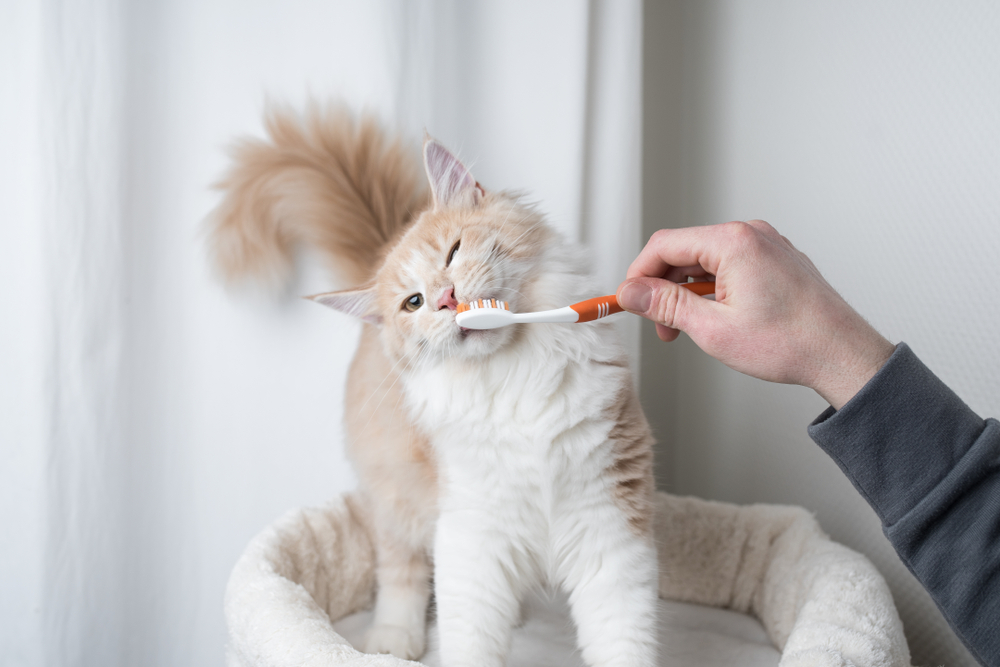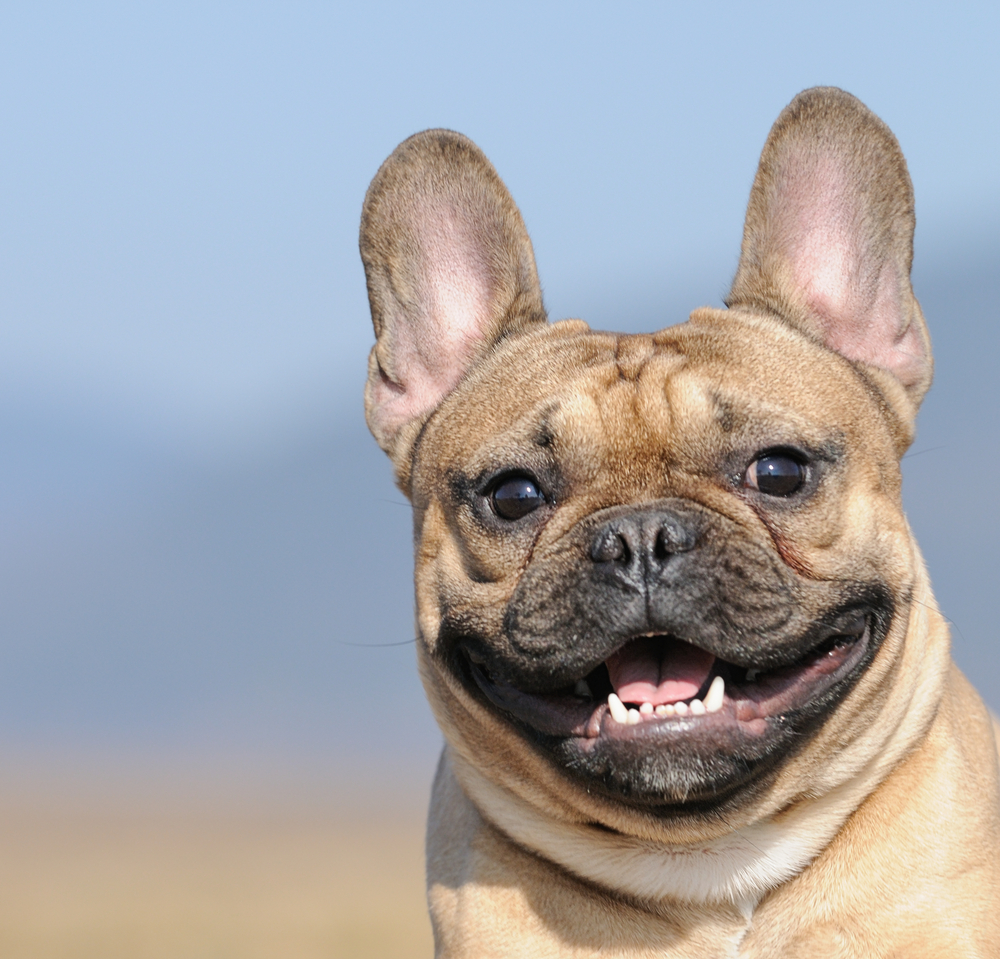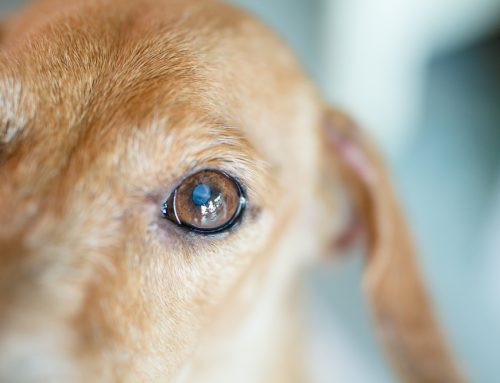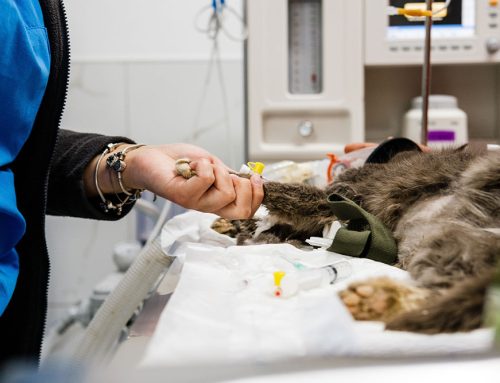February is National Pet Dental Health Month, and, to celebrate, we’re tapping into our creative side. Rather than lecturing you about the importance of your pet’s dental health—don’t get us wrong, it’s very important—we’ve written a poem to artistically express why your pet’s dental care matters, and how you can protect your pet from the serious consequences of dental disease.
Most pets have dental disease by the time they are 3.
But it’s quite preventable and doesn’t have to be.
National Pet Dental Health Month happens this time each year.
So break out your pet’s toothbrush and give us a cheer.
At Milford Animal Hospital, we care about your pet,
So we’re sharing dental care tips straight from your vet.
We wrote you this poem about pet dental care.
You can help spread awareness by giving it a share.
Dental disease in pets
After I eat, plaque builds up on my teeth
And traps bacteria on my gums—and underneath.
If that sticky plaque is not removed fast,
It hardens into tartar and causes problems that last.
Gum inflammation and bone and tooth loss;
Tooth extraction’s a bridge that I don’t want to cross.
The problems extend beyond my teeth and gums;
My organs can be damaged when bacterial infection comes.
Dental disease is common—what a shame,
But it can be prevented with the oral hygiene game.
- Takeaway — Periodontal disease, which results from plaque buildup on teeth, is the most commonly diagnosed dental disease in pets. Left untreated, the disease can lead to significant pain and reduced quality of life and may cause permanent organ damage if the oral bacteria spread through the bloodstream.
Your pet’s dental disease risk
Every pet is at risk and some, even more.
Don’t wait for the signs—provide dental care before.
A brachycephalic breed, small or senior pet
Are prone to dental problems and face a real threat.
- Takeaway — The genetic disposition to dental disease varies by individual dog, but generally speaking, small-breed dogs have more problems than larger breeds, and breeds with extreme head shapes (e.g., flat-faced bulldogs, long-nosed greyhounds) have more problems than breeds with neutral head shapes. Cat dental health varies based on individual genetics rather than breed or size.
Regular dental cleanings for pets
Tartar can’t be removed from brushing each day.
But your veterinarian can remove it in their own special way.
Annual dental cleanings are best for all pets
To polish those chompers before tartar sets.
Anesthesia ensures your pet is fully asleep;
We examine and clean while your pet’s counting sheep.
- Takeaway — All pets require professional cleanings at least once a year for optimal dental health. During a professional dental cleaning, your anesthetized pet undergoes:
- Dental X-rays — Each tooth is X-rayed to examine the root structure and surrounding bone. Most dental diseases (e.g., bone loss or root abscess) are discovered by X-ray.
- Scaling — Tartar is removed above and below the gumline from all teeth.
- Polishing — Polishing smooths the teeth after scaling, leaving a plaque-repellent surface.
- Oral examination — Your veterinarian checks gum pocket depth and examines the health of each tooth. Examination findings are compared with X-rays to determine necessary treatments.
- Treatments — Loose, fractured, or otherwise diseased teeth typically are extracted to remove the source of pain and infection and to allow the diseased area to heal. This helps prevent disease from spreading to surrounding teeth.
At-home dental care for pets
In between cleanings, brush my teeth every day
to remove plaque and tartar and keep bacteria at bay.
Use pet-friendly toothpaste in a flavor that’s great.
Start a brushing routine now—do not wait

- Takeaway — Daily brushing is preferred or at least a few times a week. Here are some tips to get you started:
- Choose a small child’s toothbrush or finger brush and veterinary-approved, flavored toothpaste. (Avoid human toothpaste, which contains fluoride that is unsafe for pets if swallowed.)
- Let your pet lick the yummy flavored toothpaste from your finger.
- Rub your finger over your pet’s tooth surfaces, then repeat with the toothbrush. (Focus on the outer surfaces only—your pet’s tongue will take care of the inner surfaces.)
- Positively reinforce teethbrushing by following it up with praise, a special treat, or a fun activity.
We hope you’ve enjoyed reading these tips.
We’re here to care for your pet’s teeth, gum, and lips.
If you have questions regarding your pet’s dental care, or would like to schedule your pet’s next dental exam or cleaning, contact our Milford Animal Hospital team to make an appointment.







Leave A Comment